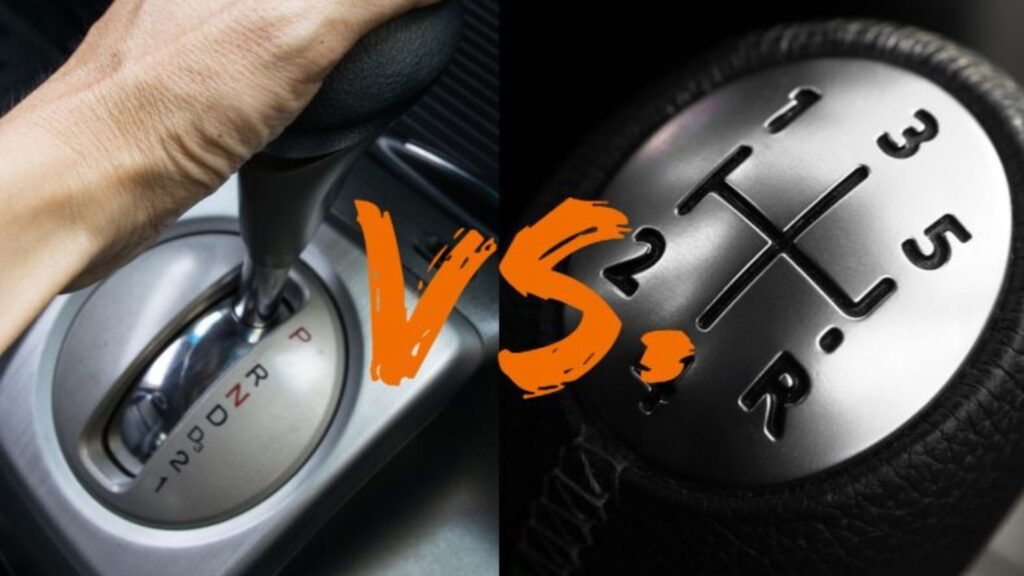Manual Cars vs. Automatic Transmission
Choosing between a manual car and an automatic transmission is an important decision when buying a vehicle. Each type has its own set of benefits and drawbacks. Understanding these differences can help you make the best choice based on your driving preferences and needs. In this article, we’ll compare manual cars with automatic transmissions, highlighting the pros and cons of each.

1. Driving Experience
Manual Cars: Engaging and Control
First and foremost, manual cars offer a more engaging driving experience. With a manual transmission, you shift gears yourself, which gives you direct control over the vehicle’s power and performance. This hands-on approach allows you to feel more connected to the car and the road. For driving enthusiasts, this involvement is a significant part of the enjoyment.
Automatic Transmissions: Ease and Convenience
In contrast, automatic transmissions provide ease and convenience. Automatic cars shift gears on their own, allowing you to focus more on driving rather than managing the transmission. This can be particularly useful in heavy traffic or on long drives, where constant gear changes can become tiring. For many drivers, the simplicity of an automatic transmission makes driving less stressful and more comfortable.
2. Fuel Efficiency
Manual Cars: Potential for Better Mileage
Another key difference is fuel efficiency. Generally, manual cars can offer better fuel economy than automatic transmissions. This is because manual gearboxes often have fewer components and less internal friction, leading to more efficient power transfer from the engine to the wheels. By optimizing gear changes, drivers can also enhance fuel efficiency further.
Automatic Transmissions: Advancements in Technology
However, automatic transmissions have improved significantly over the years. Modern automatics, especially those with continuously variable transmissions (CVTs) or advanced multi-speed gearboxes, can offer competitive fuel efficiency. These innovations help automatics achieve better mileage, although they might still fall slightly short of the efficiency offered by manual transmissions.
3. Cost Considerations
Manual Cars: Lower Purchase and Maintenance Costs
When it comes to cost, manual cars generally have a lower purchase price compared to automatics. The simpler design of manual transmissions makes them less expensive to manufacture and buy. Additionally, maintenance and repair costs for manuals are often lower, as they have fewer complex components that can wear out or fail.
Automatic Transmissions: Higher Initial and Maintenance Costs
On the other hand, automatic transmissions typically come with a higher initial purchase price. They are more complex and often more expensive to repair and maintain. The advanced technology and additional components in automatics contribute to these higher costs. Despite these expenses, many drivers find the convenience of an automatic worth the extra investment.
4. Learning Curve and Driving Skills
Manual Cars: Developing Advanced Skills
Learning to drive a manual car requires mastering the art of shifting gears and managing the clutch. This skill development can make you a more proficient and attentive driver. Manual transmissions also help you understand vehicle dynamics better, which can be beneficial in various driving conditions.
Automatic Transmissions: Easier for Beginners
Conversely, automatic transmissions are easier to learn and drive, especially for beginners. The absence of a clutch pedal and the automatic gear changes simplify the driving process. This ease of use can make automatics a more practical choice for new drivers or those who prefer a less involved driving experience.
5. Reliability and Longevity
Manual Cars: Durability and Fewer Issues
Manual transmissions are often praised for their reliability and durability. They have fewer moving parts and a simpler design, which means there are fewer components that can fail. This simplicity contributes to a longer lifespan and fewer mechanical issues over time.
Automatic Transmissions: Advanced Durability
However, modern automatic transmissions have also become more reliable. Advances in technology have improved their durability and performance. While they may still have more components than manuals, high-quality automatics are designed to last and perform well, provided they are properly maintained.
6. Resale Value
Manual Cars: Variable Market Demand
When it comes to resale value, manual cars can be a bit of a mixed bag. In some markets, manuals are less popular, which might affect their resale value. However, in enthusiast circles or regions where manuals are in demand, they can hold their value well. It’s important to consider the local market trends when assessing the resale value of a manual car.
Automatic Transmissions: Generally Higher Resale Value
Automatic transmissions generally have a higher resale value due to their popularity and ease of use. The broad appeal of automatics means they are often in higher demand, which can positively impact their resale value. For many buyers, the convenience and widespread acceptance of automatics make them a more desirable option in the used car market.
Conclusion
In conclusion, both manual cars and automatic transmissions offer distinct advantages and disadvantages. Manual cars provide an engaging driving experience, better fuel efficiency, and lower costs but require more skill and attention. Automatic transmissions offer convenience, ease of use, and advanced technology but come with higher costs and potentially lower fuel efficiency. Your choice between the two will depend on your personal preferences, driving needs, and budget. By understanding the differences and benefits of each, you can make an informed decision that best suits your lifestyle.

